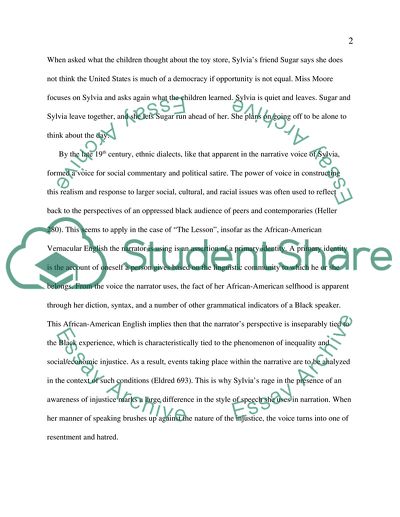Cite this document
(Toni Cade Bambaras The Lesson Story Admission/Application Essay, n.d.)
Toni Cade Bambaras The Lesson Story Admission/Application Essay. Retrieved from https://studentshare.org/education/1736633-the-lesson-classic-short-story-fiction-by-toni-bambara
Toni Cade Bambaras The Lesson Story Admission/Application Essay. Retrieved from https://studentshare.org/education/1736633-the-lesson-classic-short-story-fiction-by-toni-bambara
(Toni Cade Bambaras The Lesson Story Admission/Application Essay)
Toni Cade Bambaras The Lesson Story Admission/Application Essay. https://studentshare.org/education/1736633-the-lesson-classic-short-story-fiction-by-toni-bambara.
Toni Cade Bambaras The Lesson Story Admission/Application Essay. https://studentshare.org/education/1736633-the-lesson-classic-short-story-fiction-by-toni-bambara.
“Toni Cade Bambaras The Lesson Story Admission/Application Essay”, n.d. https://studentshare.org/education/1736633-the-lesson-classic-short-story-fiction-by-toni-bambara.


